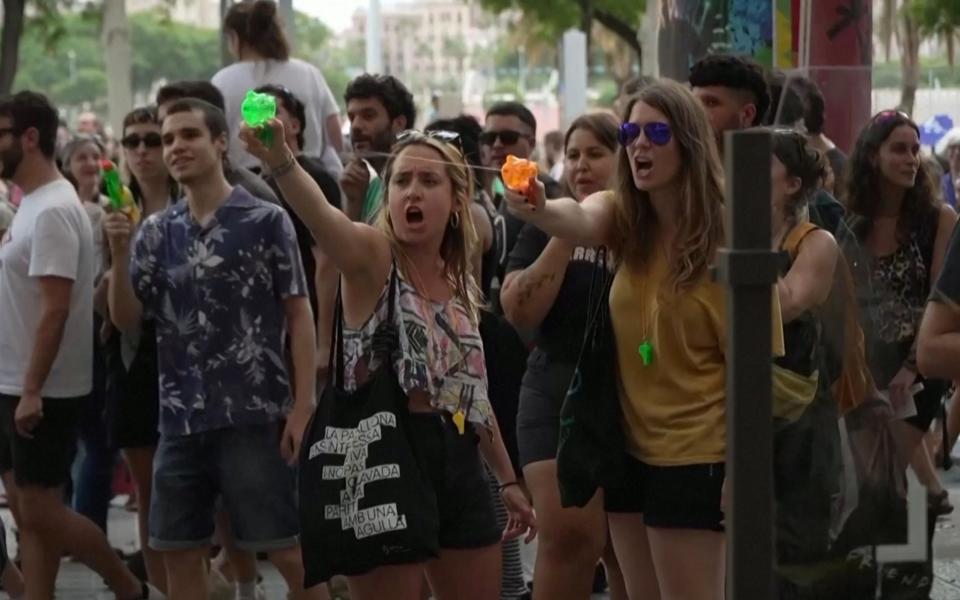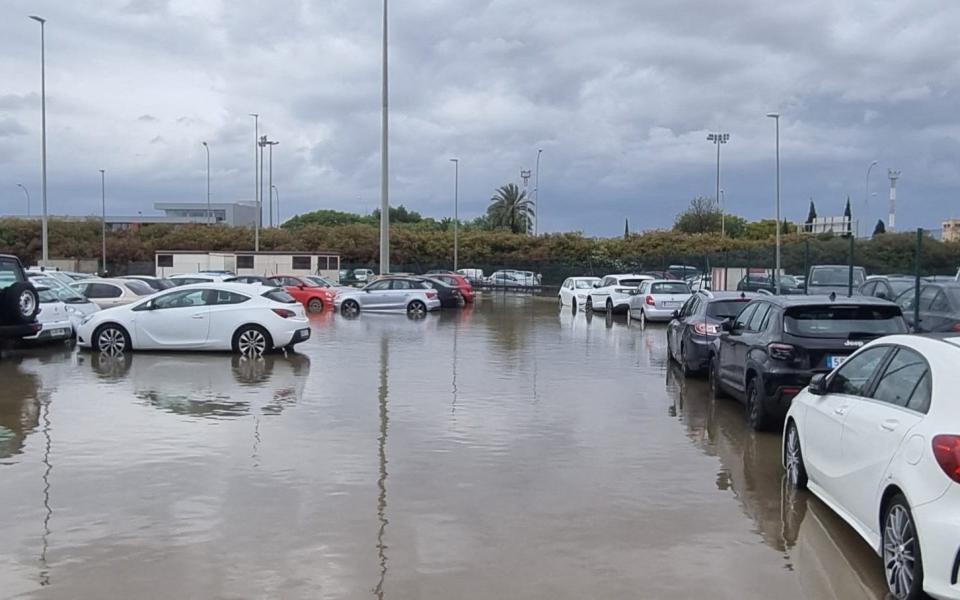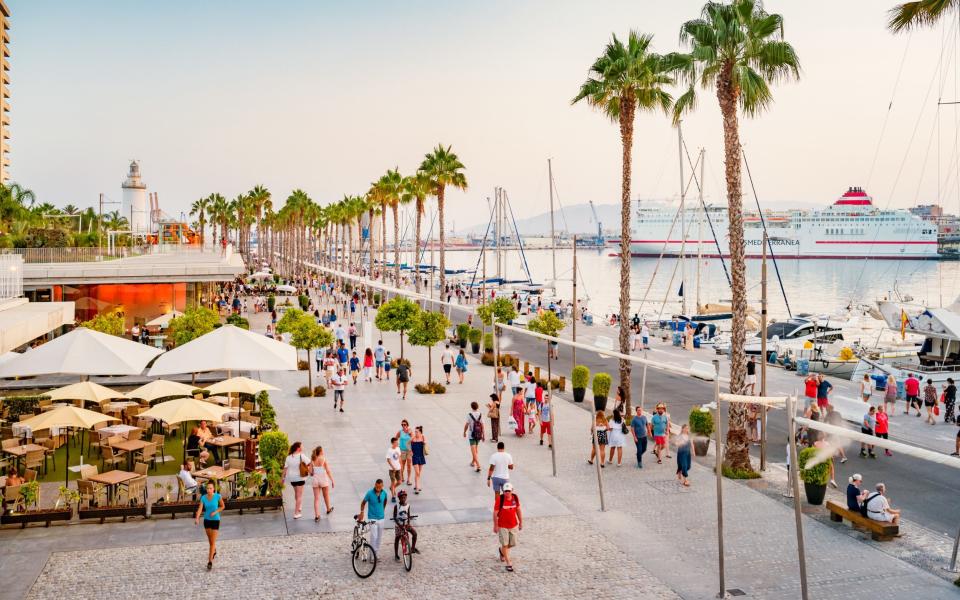Drought, biblical floods, rising temperatures and angry anti-tourist protesters holding signs saying “tourists go home” – these are just some of the scenarios that Spain’s most popular tourist destinations have experienced in the past few months.
So how do you prevent your relaxing summer vacation from turning into holiday hell?
Spain is not against tourism. Tourism accounts for around 13% of Spain’s GDP, and both local business owners and politicians are concerned that visitors has Welcome.
Many protesters even say they value tourism — they just want tourists to visit responsibly and sustainably. That means frequenting small businesses, staying in local hotels and going off the beaten path, away from the tourist hotspots.
Below I have highlighted the issues that could affect holidays in some of Spain’s key destinations and provided advice on how tourists can reduce their impact.
1. Barcelona: Airbnb bans and higher tourist taxes
In early July, tourists on Barcelona’s La Rambla were doused with water by protesters taking part in an anti-tourism demonstration, just one of many that have gripped the Catalan capital since January. Why the anger? Locals blame unmanageable levels of tourism, especially in the city centre, on rising housing costs. Chronic water shortages caused by climate change-induced droughts have been exacerbated by the sheer number of visitors. (Barcelona City Hall estimates that tourists use almost twice as much water as locals).

The city council is aware of these issues and, in an effort to address the housing crisis, Mayor Jaume Collboni has announced plans to ban short-term holiday rentals (such as Airbnb) by 2028. The daily tourist tax for hotel guests will also rise this October, from the current €3.35 (£2.74) per night to €4 (£3.37) for the first seven days of your stay.
So how can you enjoy the city while also addressing the concerns of the protesters? Avoid the already overcrowded city centre and explore charming neighbourhoods such as Eixample, Gracia and Poble Nou. Alternatively, take the train to the coastal towns beyond the city.
2. Mallorca: Protests and restrictions against alcohol
In June, heavy rain caused chaos at Palma Airport. The runway was flooded and water began to flow through the roof of the airport. Elsewhere in Spain, heavy rain turned the streets of Murcia and Alicante into gushing rivers. Both scenarios followed severe flooding in Seville in February.
June also saw around 10,000 disgruntled, banner-waving residents take to the streets and beaches of Mallorca in one of Spain’s biggest anti-tourism demonstrations. A smaller demonstration was also held in neighbouring Menorca, and another protest is planned for the evening of July 21 in the capital of Mallorca, Palma.


As in Barcelona, much of the local anger stems from holiday rentals and the behaviour of tourists in some noisy resorts. The local government has introduced new fines and restrictions to curb alcohol-fuelled tourism, and a ban on cruise ships docking in Palma is also being considered.
Jaume Bauzà, Minister of Tourism, Culture and Sport of the Government of the Balearic Islands, told The Telegraph: “All tourists are welcome and will continue to be welcome. All we ask of visitors is respect and responsibility. [We need] more sustainable and environmentally friendly [tourism] “To attract responsible and environmentally conscious visitors to the sector.”
3. Ibiza: shows and heatwaves
As with much of southern Europe, Spain’s state meteorological agency, AEMET, has predicted a hotter-than-normal summer this year in the country’s Mediterranean and in the Balearic and Canary Islands, so keep that in mind if you’ve booked or are considering heading to Ibiza’s famously relaxed, powder-soft beaches or lush inland.
Ibiza also saw its own anti-tourism demonstrations in late May, when around 1,000 protesters took to the streets. Once again, their problem is the housing crisis and the behaviour of the island’s party tourists. Some signs read: “Tourism yes, but not like this.”
The problem is exacerbated by the sheer number of tourists visiting the island compared to its small number of residents; in 2023, more than 3.5 million people visited Ibiza and neighbouring Formentera, while the islands have a combined population of just 160,000.
What you can do: Be prepared for rising temperatures and avoid larger corporate hotel chains in favor of local businesses. Whenever possible, stay away from tourist areas.
4. Malaga: Anger over cruise ships
In the Andalusian city of Malaga, people also took to the streets; in July, more than 5,000 people carried banners reading “Malaga is for living, not surviving” and “€1,300 salary, €1,100 rent – how can you live?”
Once seen simply as the gateway to the Costa del Sol, Malaga has recently become a city break destination in its own right, with its Picasso Museum and beautiful beaches, but this comes at a price.


As in Barcelona, cruise ships fill the city centre with short-term tourists who do little to boost the city’s economy and make the streets even more congested. Meanwhile, Malaga (both city and town) has the highest number of tourist rentals in Spain, according to the National Institute of Statistics, leading frustrated locals to put stickers on their holiday homes saying “tourists go home” or “this used to be my house”.
The solution? As elsewhere, travelling responsibly and sustainably is key. Pablo Carrington, founder and CEO of Marugal Hotel Management, which owns the Palacio Solecio hotel in Malaga, told The Telegraph: “These protests are not about hatred towards tourists because we all recognise the value this industry brings to the city. They are about the need to rethink the type of tourists we want to visit our cities.”
5. Canary Islands: hunger strikes and water shortages
In April, an estimated 200,000 people took to the streets of Tenerife’s capital, Santa Cruz, in what was the largest demonstration in the island’s history. A month later, six activists began a 20-day hunger strike, demanding sustainable tourism over mass tourism and citing a lack of affordable housing, pollution and water scarcity. They also sought to stop new tourism plans that included building a five-star hotel on one of Tenerife’s last unspoiled beaches.
But it’s not just overcrowding in towns and apartments. As in other parts of Spain, locals are fed up with tourists behaving badly. Signs have been posted on beaches and elsewhere saying “closed to tourists”, while tourists have drawn more ire in Teide National Park for using camping stoves and leaving their cars in designated parking areas.
So should you still consider visiting? Yes, absolutely. The Tenerife Tourism Authority told The Telegraph: “Tourists are completely welcome in Tenerife. Tenerife’s strategy includes putting sustainability at the forefront, not just environmentally but also economically and socially. We encourage visitors to explore the lesser-known parts of the island, which will benefit all areas economically.”